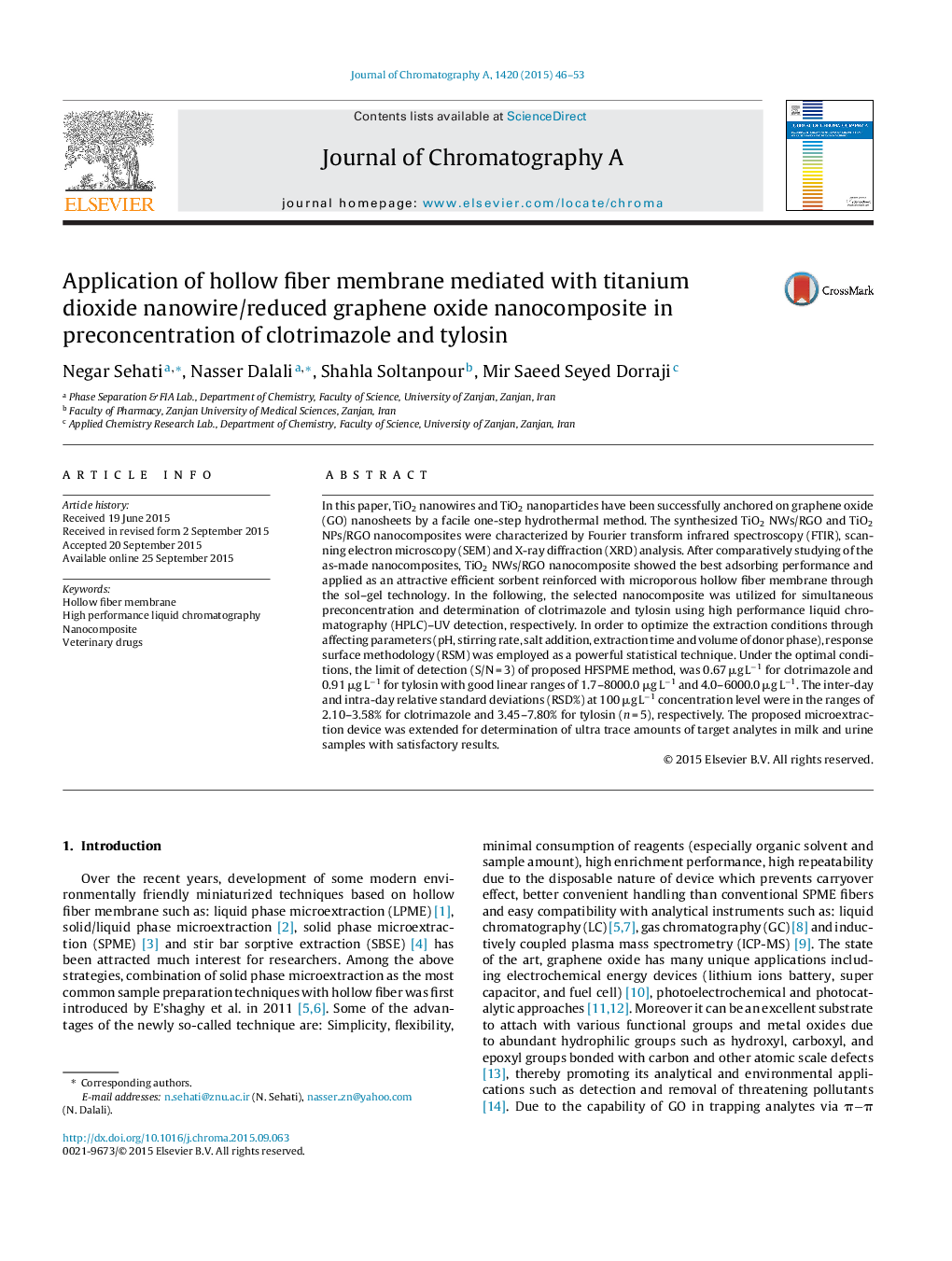| Article ID | Journal | Published Year | Pages | File Type |
|---|---|---|---|---|
| 1200876 | Journal of Chromatography A | 2015 | 8 Pages |
•A facile one-step hydrothermal method was used to anchor TiO2 nanowires and TiO2 nanoparticles on graphene oxide.•TiO2 NWs/RGO nanocomposite mediated with hollow fiber membrane was utilized for preconcentration of trace amounts of clotrimazole and tylosin.•Optimization of extraction procedure was carried out by response surface methodology.•The applicability of the proposed method was evaluated in milk and urine samples.
In this paper, TiO2 nanowires and TiO2 nanoparticles have been successfully anchored on graphene oxide (GO) nanosheets by a facile one-step hydrothermal method. The synthesized TiO2 NWs/RGO and TiO2 NPs/RGO nanocomposites were characterized by Fourier transform infrared spectroscopy (FTIR), scanning electron microscopy (SEM) and X-ray diffraction (XRD) analysis. After comparatively studying of the as-made nanocomposites, TiO2 NWs/RGO nanocomposite showed the best adsorbing performance and applied as an attractive efficient sorbent reinforced with microporous hollow fiber membrane through the sol–gel technology. In the following, the selected nanocomposite was utilized for simultaneous preconcentration and determination of clotrimazole and tylosin using high performance liquid chromatography (HPLC)–UV detection, respectively. In order to optimize the extraction conditions through affecting parameters (pH, stirring rate, salt addition, extraction time and volume of donor phase), response surface methodology (RSM) was employed as a powerful statistical technique. Under the optimal conditions, the limit of detection (S/N = 3) of proposed HFSPME method, was 0.67 μg L−1 for clotrimazole and 0.91 μg L−1 for tylosin with good linear ranges of 1.7–8000.0 μg L−1 and 4.0–6000.0 μg L−1. The inter-day and intra-day relative standard deviations (RSD%) at 100 μg L−1 concentration level were in the ranges of 2.10–3.58% for clotrimazole and 3.45–7.80% for tylosin (n = 5), respectively. The proposed microextraction device was extended for determination of ultra trace amounts of target analytes in milk and urine samples with satisfactory results.
